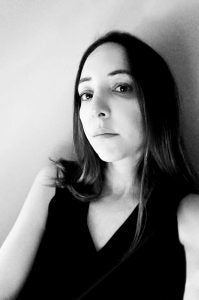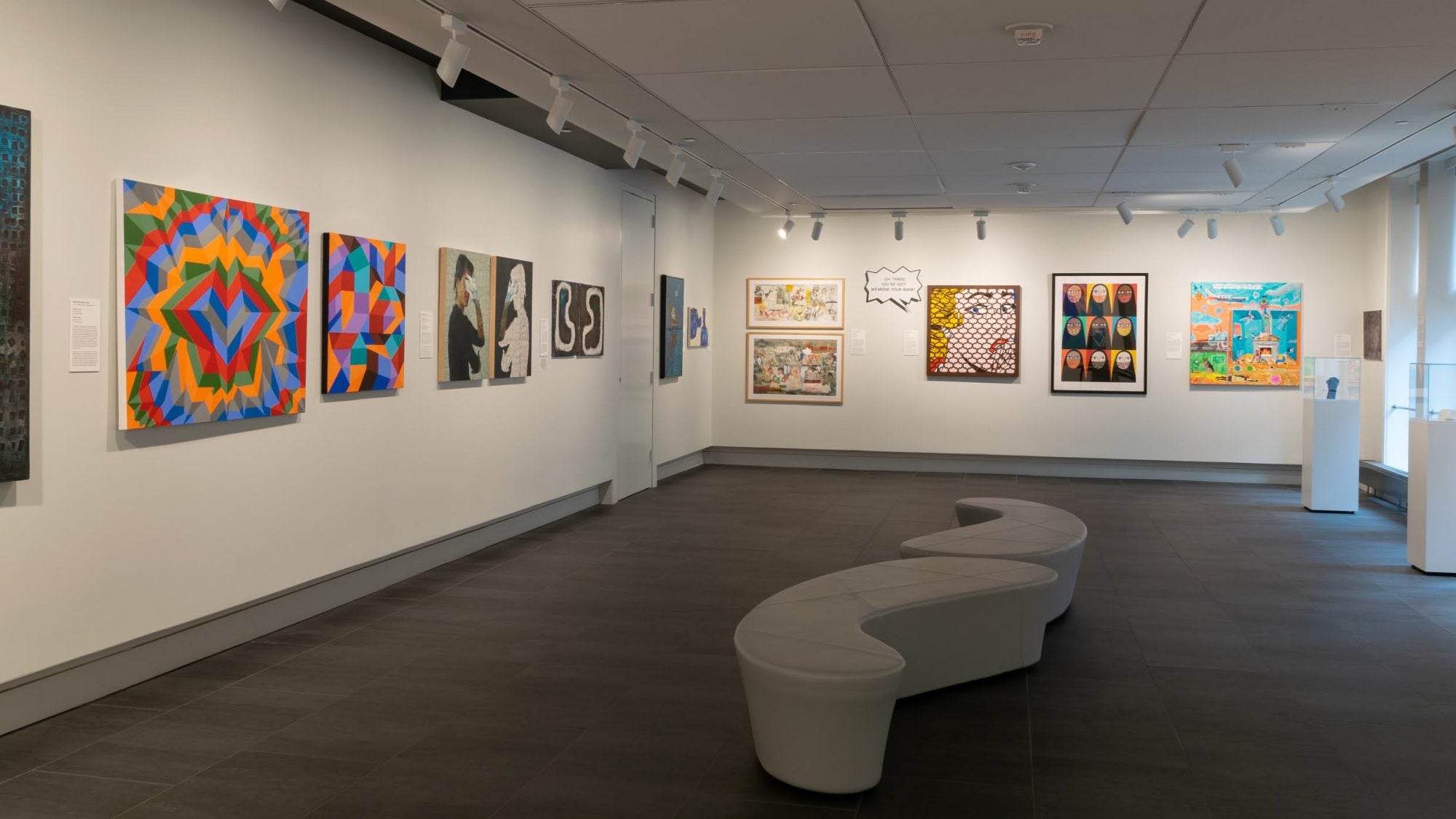Q&A with MAAS Student Laila Jadallah
By Vicki Valosik
 Prior to joining the MAAS program this fall, Laila Jadallah spent much of her career in the arts—as an artist administrator, curator and producer for museum exhibitions, and as an artist herself. Her exhibitions have been featured in The Washington Post, AlHurra TV, The New York Times, and D.C. Modern Luxury Magazine, while her own art resides in the permanent collection of the Department of State Office of Arts in Embassies. Her most recent project was the curation of “Art in Isolation: Creativity in the Time of COVID-19”—an exhibition of 54 works from 39 artists from the Arab world—for the Middle East Institute (MEI). As the exhibit curator, Laila wrote the open call, researched and approached artists, helped select the final artwork, and curated the physical installation. The exhibit can be viewed online or at MEI’s gallery in Washington D.C.
Prior to joining the MAAS program this fall, Laila Jadallah spent much of her career in the arts—as an artist administrator, curator and producer for museum exhibitions, and as an artist herself. Her exhibitions have been featured in The Washington Post, AlHurra TV, The New York Times, and D.C. Modern Luxury Magazine, while her own art resides in the permanent collection of the Department of State Office of Arts in Embassies. Her most recent project was the curation of “Art in Isolation: Creativity in the Time of COVID-19”—an exhibition of 54 works from 39 artists from the Arab world—for the Middle East Institute (MEI). As the exhibit curator, Laila wrote the open call, researched and approached artists, helped select the final artwork, and curated the physical installation. The exhibit can be viewed online or at MEI’s gallery in Washington D.C.
What was the vision behind this exhibition?
The vision for the exhibition was to include works of art by diverse artists (in terms of age, career experience, and medium) from the region to exhibit the multitude of ways artists’ practices were affected by the pandemic and how they chose to reflect it—whether directly or not—through their work.
What do you hope viewers take away from the exhibition?
I hope viewers take away several things: One, that it humanizes the experiences of those who have been living in difficult conditions long before COVID, such as in places like Gaza and Yemen. In contrast, I hope that the depth and breadth of the work in the exhibition provides a lens from which artists from the region’s experiences avoid being essentialized. I believe artists provide us with a great amount of insight into what is happening in the world, whether or not they directly address socio-political issues in their work. We should support artists and consider their work a legitimate historical record. I hope that when looking back at this exhibition years after the pandemic has come and gone, people can view this exhibition as a sort of time capsule of the lived experience during this period in history.
How did you and your colleagues at MEI select the pieces to include, and did you notice any themes among the submissions?
We received an incredible amount of good work from so many artists. It was very difficult to narrow down, but ultimately we chose works that could provide a variety of perspectives, stories, and experiences. Several themes emerged such as the exploration of interior spaces and “home,” as well as ongoing issues such as loss of life due to war or conflict, gender and sexuality, power, and more.
What were the challenges or unique opportunities of producing an exhibit during a global pandemic?
The pandemic posed several challenges, including determining whether and how to install the exhibition physically and shipping delays that caused us to push back the exhibition’s start date. The unique opportunity of this period is the increased utilization by arts and cultural institutions to produce digital exhibitions. Utilizing an online platform allowed us to reach a much larger audience and to include more artists and artwork than the physical installation would allow.
As a student at MAAS, how do you hope to merge your academic interests with your professional background in the arts?
I see my academic interest and professional background merging in having the foundation of knowledge required to really understand and explore cultural production in the region and the diaspora. I hope to contribute to the scholarly research and recording of the contributions and impact of artists from the Middle East to the history of the region.
Laila is a first-year student in the MAAS program and Managing Director of the Washington Studio School. She holds a B.A. in Integrative Studies from George Mason University and a certificate in photography from SPEOS Photographic Institute Paris.
